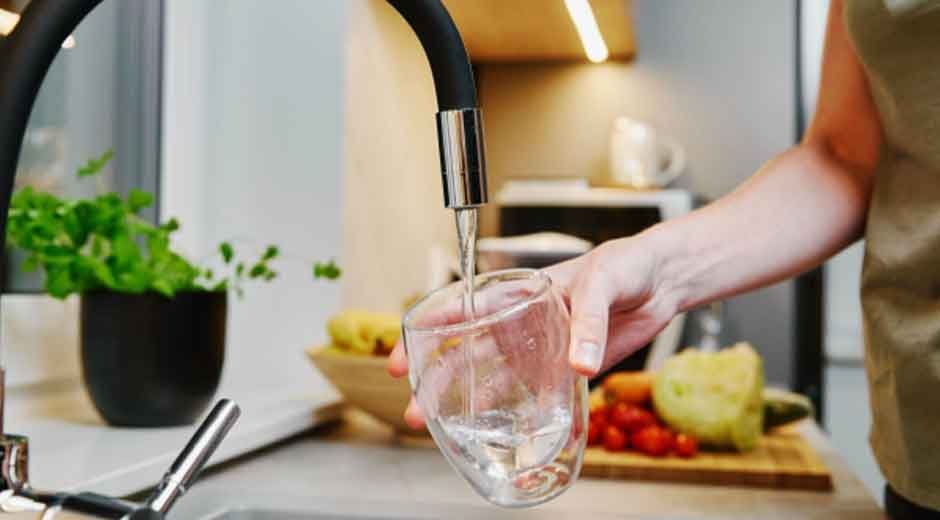Skip to the good bit
ToggleLet’s be real — the water coming out of your tap looks clean, but that doesn’t always mean it’s chemical-free. Dallas Management Pros notes that waterborne chemicals are sneaky contaminants that can make their way into your supply through industrial runoff, farming activities, or even the very treatment plants meant to make water safe.
Whether you’re connected to a municipal system or have your private well, there’s always a risk these chemicals could show up. And the health consequences? Not fun. We’re talking stomach issues, potential nerve problems, and in extreme cases, certain cancers.
The good news: you’re not powerless. With a few smart moves, you can take charge and make sure the water in your home is as safe as it tastes.
Common Waterborne Chemicals You Might Find at Home
Before you can fight the bad guys, you’ve got to know who they are. In household water, the main chemical culprits often include:
- Lead– Leaches in from old pipes and fixtures. Even tiny amounts can mess with kids’ brain development and cause kidney issues in adults.
- Chlorine– Added to kill bacteria, but can create harmful by-products like trihalomethanes, linked to higher cancer risk.
- Fluoride– Usually a good thing for teeth, but too much can lead to skeletal fluorosis (not exactly a bucket list item).
Surveys show that around 12% of Australian homes have water with lead levels above the recommended limit. Knowing this makes one thing clear: staying informed is your first line of defence.
How to Test Your Water for Contaminants
If you’ve never tested your home’s water, now’s the time. Here are your main options:
- DIY Water Test Kits– Affordable, quick, and user-friendly. Usually, you dip a strip or fill a vial, and the colour change tells you what’s lurking in your water.
- Professional Testing– Costs more, but you’ll get an in-depth breakdown of a wide range of contaminants.
A yearly test is a smart move, or sooner if you notice changes in taste, smell, or colour. Most kits come with an easy-to-read chart, but if you’re scratching your head at the results, your local water authority or the Australian Drinking Water Guidelines can help you decode them.
Picking the Right Water Filtration System
Once you know what’s in your water, it’s time to filter out the bad stuff. Here’s the quick lowdown:
- Activated Carbon Filters– Great for removing chlorine, sediment, and some chemicals. Also makes your water taste fresher.
- Reverse Osmosis Systems– A powerhouse option that can remove lead, nitrates, and a long list of other contaminants.
Choosing a system is about matching the filter to your needs — and your budget. Carbon filters are cheaper and easier to maintain, while reverse osmosis units cost more but usually require less frequent filter changes.
Pro tip: follow the manufacturer’s installation and maintenance instructions to the letter. Even the best filter won’t help if it’s not set up right.
Extra Ways to Keep Your Water Safe
Filtration isn’t the whole story. A few additional habits can make a big difference:
- Maintain Your Plumbing– Old pipes can be a contamination source. Have a plumber check them regularly.
- Flush Faucets– After the water’s been sitting for hours (like overnight), run it for a minute before drinking.
- Use Cold Water for Cooking– Hot water can dissolve contaminants from pipes more quickly.
And don’t forget to keep up with local water quality reports — they’re your early warning system for any changes in your area.
Staying Informed and Getting Involved
Water safety isn’t just a “my home” issue — it’s a community one. You can:
- Keep tabs on new regulations and testing results.
- Support local initiatives for cleaner water.
- Share tips with neighbours so more people take steps to protect their homes.
The more people care, the harder it is for unsafe practices to slip through unnoticed.
Final Word: Take Control of Your Water Quality
Your water is too important to leave to chance. By learning what chemicals may be in your supply, testing regularly, and installing the right filtration system, you can drastically cut your risk of exposure.
Now’s the time to protect your home with a water filter system that matches your needs. Not only will you be safeguarding your family’s health, but you’ll also enjoy the peace of mind that comes with knowing exactly what’s in your glass.
Safe water isn’t a luxury — it’s a basic right. Take the steps today to make sure you have it tomorrow.







